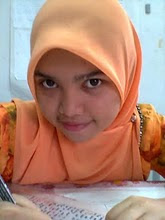Hi everyone!
We meet again on the 3rd entry :)
Wait!Before we get started, I want you to get ready with your pen and solve these problems.
Wait!Before we get started, I want you to get ready with your pen and solve these problems.
1) There were 8 lorries and 7 more drove in, how many are there now?
2) There were 7 lorries and now there are 15, how many drove in?
3) 8 lorries drove in, now there are 15, how any drove in?
Although all of them showing the same answers, did you find the second and third questions as the hardest? Therefore, it shows that it is important to develop children's mental computation on addition, subtraction, multiplication and division on the early age. Thus, in this entry I will explain about addition, subtraction, multiplication, division and the strategies applied in those operations.
According to Isaacs and Carroll (1999), the best way to extend primary-grade children’s informal understanding of addition and subtraction is by asking them to solve simple problems without telling them how the problems are solved. This means that students have to get an opportunity to solve the problems by themselves first, and from there, the teacher can examine the students' cognitive level. Different ways of representing the problems as shown above are important to develop students' computation thinking. Thus, teacher can use different mathematical strategies in teaching addition and subtraction. Example are shown below.
1) Tens frame
The children count 8 purple dots to represent 8 lorries and count 7 orange dots as 7 lorries that drove in, on the tens frame. The children will come out with this problem solving,
Tens Frame 1= 10 dots
Tens Frame 2= 5 dots
Total number of the lorries= 15
2) Hundred Chart
Children put the dot on the number 8 and starting counting up to 7 boxes in the hundred chart to find out the total number of the lorries which is 15.
3) Number line
Children counting the lorries that drive in using the number line.
When it comes to big number operation such as in tens, the teacher can use Hundred Chart or Number Line instead of Tens Frame. For example when solving the problem 48-23, the teacher could use the hundred chart. The operation is shown below.
The strategies that involves in the hundred chart and number lines are:
1) Jumping in tens forwards or backwards
2) Jumping in tens forwards or backwards and the relate it with addition or
subtraction such as add or take away.
Children jumping in tens backwards until 28 and take away another 3
OR
Children can round up 48 to 50 and then jumping in tens backwards until 30 and take away another 5.
Multiplication and division can also be taught in various ways and strategies. It can be in the form of word problems, basic number equation or through the use of object. Example of word problems are shown below:
1) Peter has 3 ropes and the length for one rope is 6m length. What is the
total length for all the ropes?
2) There are 3 different flavours of ice cream and 2 different types of cones. If
you can put one cone with one flavour each time, how many different
combination are there?
Taking question 2 as an example, teacher can draw out the equation visually as shown below.
Students can see clearly there are 6 different types of flavours.
Teacher can also visualise the multiplication and division process through objects or cards. Examples as follow:
Online game such as Bobbie Bear changing the outfit can also help the children to understand multiplication better. They not only understand the multiplication process visually but kinesthetically the also discover how the multiplication process might happen in our daily life.
Division is the inverse operation of multiplication. It consists of three different parts: the dividend, the divisor, and the quotient.

According to Origo (2008), division is splitting a number (dividend) into smaller, equal part and it is can be in partition model or quotation model.
1) Partition model (sharing model)
Example: 15 apples are grouped into 3 bags. How many apples in each
bag?
Symbol: 15 ÷ 3=______
2) Quotation model (grouping model)
Example: There are 15 apples grouping into bags which 5 apples in each
bag. How many bags are there?
Symbol: 15 ÷ ____ = 5













0 comments:
Post a Comment